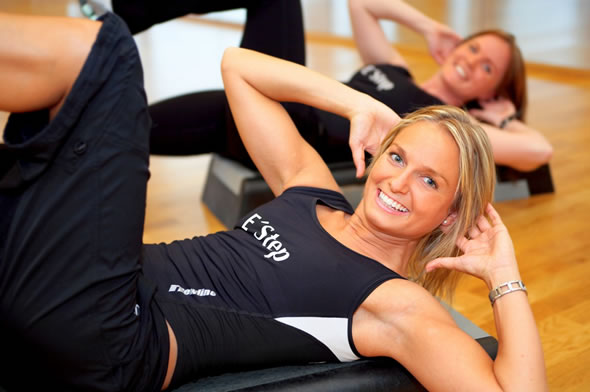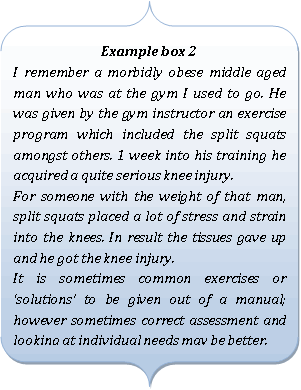Weight Loss Help and Tips |
| Posted: 26 Jun 2011 06:56 AM PDT There are many fitness tips for women but not all of them work for every woman. In this post our fitness experts have gathered the 10 most important fitness tips for women that can give you optimum weight loss results in the fastest way possible. Fitness tips for women – IntroductionSo you bought the book, joined the club, and read the myriads of articles, tips, and advice pages. You have the diet arranged; however, majority of them say 'for best weight loss results exercise'. If only it was that simple… Where do you start? Well some of you may have already bought the gym membership or you are already killing yourself on the elliptical machine and you are nowhere near in looking like a Baywatch babe. What can you do? Bellow I have listed 10 fitness tips to help you with the Baywatch body quest. 1. Consult a medical professional and the appropriate exercise/fitness professional.Yeah, yeah, yeah… you heard it all before. No really. Exercise is actually a form of a stress response for the body. Everybody tells you that exercise is healthy and how many health benefits you will get from exercising. Yes you will but it also increases heart rate, breathing rate, blood pressure and a number of stress hormones take over your body. Don't be a casualty. You do need to know if there is anything which could contradict any form of exercise so you can choose the best weight loss exercise or workout to suit your needs. In addition to a medical professional, the appropriate fitness professional should be able to advise you on a workout, and show you the correct techniques for exercises. I am sure you want to enjoy it and skip heart attacks and injuries.
2. Pace yourself and work on your own level.Maybe you have read about this super high intensity – fat burning army style workout and you want to try it out. No doubt you will get there, but if you never done any exercise in your life then be prepared to be hit by a tone a bricks. Your body is not used to work and as a result your muscles will ache, you will feel sick and maybe be able to only move your finger without being in pain. The solution? Pace yourself through exercising. Start by walking around the block 2 – 3 times a day instead of running a marathon, or go swimming for 30min; basically do small and light workouts and build on them in time. You may be thinking that you hardly burn any calories this way, but believe me you do. If your muscles are not used to be doing a lot, walking around the block is hard work for them. Moreover, working on your own level and ability will minimise the risk of injuries.
3. Make everyday life activities work for you. Whether it is time, money or convenience going to the gym, running or taking on a sport it is not possible for everybody. That doesn't mean that you cannot exercise. Use everyday life activities to make up your daily workout. For example use the stairs instead of taking a lift, walk to the shops, walk to work or get off the bus one stop earlier and brisk walk the rest. If you look around your environment and everyday life you can find tones of activities which can be turned into an exercise opportunity. Use some of the rest of the fitness tips for women (i.e. tips 4 & 7) in combination with your daily activities to get the most of it. 4. Break the workout in 2 sessions.Breaking the workout into 2 sessions per day can help in increasing your metabolism. In other words you could be potentially burning more calories. You don't have to increase the amount of time or exercises you do in a day or do your usual workout twice. Just cut it in half and do one half in the morning and one half in the evening. For example if you go running for an hour a day, go 30min in the morning and 30min in the afternoon/evening. If you do use the gym and going twice per day is not feasible then do a slightly shorter workout in the gym and go for a brisk walk for your 2nd daily workout. One thing you need to be careful is not to overload your body too much. When doing 2 workouts it is easy to fall in the trap of adding more exercises or more time. Too much exercising can place a lot of stress in the body and you could be having the opposite results.
Fitness Tips for Women – 5 more tips5. Do resistance exercise.It is often advocated that people burn calories and fat with aerobic exercise and is better for weight loss. The idea is that during moderate intensity aerobic exercise the body burns a combination of glycogen (sugar) and fat whereas with resistance exercise the body burns mostly glycogen. However, studies indicate that in terms of post training results resistance exercise tends to increase metabolic rate and fat burning. One of the reasons is that resistance/weight training increases the body's muscle mass which is one of the main factors of increasing metabolic rate during rest. The effect of exercise in using fat and energy (and therefore aiding in weight loss) is not only in terms of how many calories we burn while we exercise but also how many calories we burn once we stopped. Therefore, for best results do add some resistance exercises in your workout.
6. Do resistance exercise first and aerobic exercise second.We worked out above that it is good to add resistance exercises in your workout. Now plan your workout in that you start with the resistance part and finish with the aerobic exercise. With resistance exercise the body will be using mostly glycogen (sugar stores) for energy. When coming to do the aerobic part most of the glycogen will have been used and therefore the body will be mobilising your fat stores to fuel the exercise. Needless to say you will be potentially be burning a lot more fat. 7. You burn what you eat. A common conception used in advising people is eating carbs before exercise and protein after. The principle for that is that carbs will give you the energy to fuel the exercise and protein is beneficial for muscle building post exercise. Well if you are going to run a marathon you do need to be stocked up with your carbs as you will need the energy. However, for the average daily workout if you pack yourself before exercising with loads of carbs all you will be burning during exercise is sugar. Yes the post exercise fat burning effect does count as well, but if you want to optimise the fat you are using, then avoid overloading yourself with loads of carbs before exercising. If your diet in general includes a moderate amount of carbohydrates anyway, then that should provide sufficient energy for exercise. Some studies also suggest supplementing with protein before exercise. This is suggested to aid in increasing muscle mass. However, I tend to say that if your diet includes a moderate amount of protein (see also protein diet tips) then that should be sufficient. In addition, not all protein supplements, powders, shake and so on are off good quality, and choosing the 'best' can be a mind field. 8. Have a coffee.Coffee increases the sympathetic nervous activity in the body and in result it can increase the metabolic rate and fat mobilisation. Studies also suggest that it can improve performance during exercise. As a result having a cup of coffee before exercise could potentially help in burning more calories and quite importantly more fat. The intensity and kind of exercise will affect which fuel your body will use more off; look at fitness tips for women 6 and 9 as well. Be aware: Stimulating the sympathetic nervous system also results in increasing heart rate and having a few stress hormones floating around. Exercise can have the same effect as mentioned earlier, so be aware. Do not drink too much coffee (or a very strong one) as what you don't want is effects such as palpitations, anxiety etc. If you are sensitive to coffee or if you have any conditions (example high blood pressure) which may be made worst don't use coffee or consult a medical professional before you do. 9. Alternate the intensity.Alternating the intensity of exercise can help in using the different energy systems of the body and also different muscle fibres. Alternating the intensity means exercising in high intensity then low intensity then high again and so on. Example run fast for 5min then walk for 5min then run again etc. The theory behind it is that you use mainly glycogen during high intensity then mobilizing fat as a fuel during low intensity. Some studies suggest that this exercise intensity alternation can increase the amount of fat you burn and potentially can increase the amount of calories you use. 10. Have a rest day.Last but not least, have a rest once a week. How can rest optimise weight loss? Well muscles recuperate and grow (adapt to the overload of exercise) during rest. To be perfectly honest for all the structures and systems of the body (tendons, nerves, ligaments, cardiopulmonary etc) to adapt to exercise, need rest. If you overload the body and its structures with too much exercise you could potentially get the opposite result. In addition it would increase the risk of injuries and illness. A day's rest will help your body to recover and make any adaptations to exercise. This way you can enjoy all the benefits and gains of exercise which extend beyond than just losing weight. Follow the above 10 fitness tips for women and you are on your way to a healthier body and mind. See also weight loss tips for women for 12 more weight loss tips. |
| You are subscribed to email updates from Weight Loss Help and Tips To stop receiving these emails, you may unsubscribe now. | Email delivery powered by Google |
| Google Inc., 20 West Kinzie, Chicago IL USA 60610 | |



